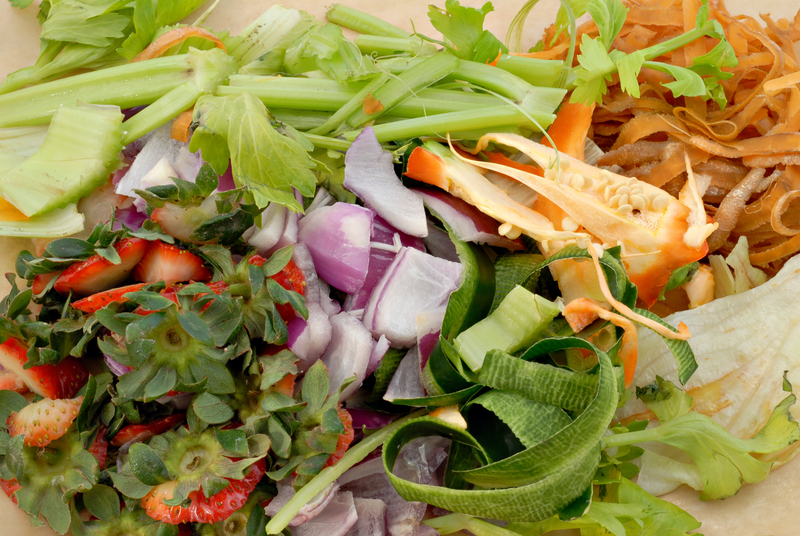Identifying Hazardous Plastics to Avoid: A Comprehensive Guide
In today's modern world, plastics are everywhere--from food packaging and water bottles to children's toys and electronics. While plastics have made life more convenient, not all of them are created equal. Some types pose serious health and environmental risks, making it essential to know which ones are hazardous and should be avoided. This detailed guide explores how to identify dangerous plastics, discusses the types you should steer clear of, and offers alternatives for safer choices.

Understanding Plastic Codes: What Do They Mean?
Plastics are commonly marked with a resin identification code--a number within a triangle composed of arrows, usually found at the bottom of containers. These numbers, ranging from 1 to 7, indicate the type of plastic resin used:
- 1: PETE or PET (Polyethylene Terephthalate)
- 2: HDPE (High-Density Polyethylene)
- 3: PVC (Polyvinyl Chloride)
- 4: LDPE (Low-Density Polyethylene)
- 5: PP (Polypropylene)
- 6: PS (Polystyrene)
- 7: Other (Polycarbonate, BPA, and various others)
These codes are crucial for identifying hazardous plastics to avoid. Let's dive deeper into which ones are dangerous and why.
Plastics to Avoid: High-Risk Types and Health Hazards
1. PVC (Plastic #3): The Toxic All-Rounder
Polyvinyl Chloride (PVC) is notorious for its harmful additives--including phthalates, lead, and cadmium. Used in clear food packaging, toys, plumbing pipes, and shower curtains, PVC is associated with several health risks:
- Release of toxic chlorine-based chemicals during its manufacture and disposal
- Potential to leach phthalates and other additives, known as endocrine disruptors
- Links to respiratory issues, hormone disruption, and even certain types of cancer
PVC is widely recognized as one of the most hazardous plastics to avoid, both for its immediate and long-term risks.
2. Polystyrene (Plastic #6): Styrofoam Dangers
Polystyrene, commonly known as Styrofoam, is found in disposable plates, cups, takeout containers, and packaging peanuts. The main concern is the migration of styrene, a suspected carcinogen, into food and drinks, especially when heated.
- Styrene exposure has been linked to irritation of the skin, eyes, and respiratory tract
- Potential effects on the nervous system
- Environmental hazard: extremely *difficult to recycle* and often ends up in landfills and oceans
To protect your health, avoid using polystyrene for food and beverages, especially hot items.
3. Polycarbonate and "Other" (Plastic #7): The BPA Problem
Plastic #7 is a catch-all category that includes polycarbonate plastics and materials containing BPA (Bisphenol A). These are frequently found in water bottles, baby bottles, food storage containers, and the lining of metal cans.
- BPA is a known endocrine disruptor, mimicking estrogen and interfering with hormone regulation
- Associated with fertility issues, heart disease, developmental problems, and increased cancer risk
- Infants and young children are especially susceptible to BPA exposure
While "BPA-free" products are now widely available, some alternatives use BPS or BPF, which may have similar adverse health effects. Stay cautious with any plastics marked as #7.
Other Suspect Plastics: When Caution Is Warranted
- PLA (Polylactic Acid): Marketed as a biodegradable alternative, but often only compostable in industrial facilities and not suitable for high temperatures.
- Colored or Soft Plastics: These can contain additional chemical additives, dyes, and plasticizers which may leach toxins.
Safer Choices: Plastics Less Likely to Harm You
1. PETE or PET (#1): Use With Care
Polyethylene Terephthalate is commonly used for single-use water bottles and food packaging. While considered safer than many other plastics, PET can absorb odors and flavors and is *not intended for repeated use*. There is some debate about the leaching of antimony (a trace catalyst from manufacturing) when exposed to high heat.
2. HDPE (#2): A Good Option
High-Density Polyethylene is used in milk jugs, detergent bottles, and some plastic bags. It is resistant to chemicals and does not readily leach ingredients, making it one of the safest commonly available plastics.
3. LDPE (#4): Relatively Safe
LDPE is found in grocery bags, bread bags, and some food wraps. While generally considered safe, it is best not to expose these plastics to high heat or reuse them for food storage.
4. PP (#5): Preferred for Food and Baby Products
Polypropylene is often used for yogurt cups, baby bottles (BPA-free), and straws. It is known for its stability under heat and is less likely to leach chemicals, provided it is not exposed to prolonged high temperatures.
Practical Tips for Identifying Hazardous Plastics to Avoid
How to Check Your Plastics
- Look for the resin code number at the bottom or side of the product--avoid #3, #6, and #7 whenever possible.
- *Be wary of plastic products with no code*--they may contain unknown substances.
- Choose clear, rigid plastics (like #1, #2, and #5)* over soft, colored, or flexible variants.
- If the plastic smells strongly or deforms with heat, avoid using it for food or drink.
When In Doubt, Avoid Single-Use Plastics
Many hazardous plastics--especially polystyrene and PVC--are used in disposable items. By cutting back on single-use plastics, you reduce your exposure and also help protect the environment.
Special Note on Microplastics
Plastics that degrade in the environment often break down into microplastics, which are now found in water, air, and food sources. These tiny particles can carry harmful chemicals and pose further health risks. Avoiding hazardous plastics minimizes your contribution to this growing problem.
Common Products Containing Hazardous Plastics
- Cling wrap and shrink wrap (often PVC-based)
- Takeout food containers and cups (Styrofoam or Polystyrene)
- Cheap children's toys (may include PVC or phthalates)
- Plastic disposable cutlery (#6-PS)
- Older reusable water bottles and sippy cups (potentially polycarbonate/BPA)
- Vinyl shower curtains and certain flooring options
Health & Environmental Consequences of Hazardous Plastics
The impacts of hazardous plastics go beyond personal health. Toxins released during the production, use, and disposal of these plastics can enter the air, soil, and water, affecting entire ecosystems. Some chemicals, like phthalates and BPA, can interfere with wildlife reproduction, neurological development, and food chain stability.
For human health, the list of risks includes:
- Hormonal imbalances and reproductive health issues (linked to phthalates, BPA, and other plasticizers)
- Cancer risk (notably with styrene and certain additives in PVC)
- Respiratory and immune system effects
- Potential for lifelong consequences, especially in children and pregnant women
Reducing Exposure: Simple Steps to Safer Plastic Use
- Always use glass, stainless steel, or ceramic containers for food and beverages wherever possible.
- Avoid microwaving plastic containers--even those labeled "microwave safe".
- Do not use plastic containers for hot foods or drinks, which can increase chemical leaching.
- Switch to wax paper, silicone, or beeswax wraps in place of plastic film.
- Opt for BPA-free and phthalate-free products, but research the brand to ensure no similar chemicals are used.
- Support businesses and policies that reduce the use of single-use plastics or require safer materials.

Key Takeaways: How to Avoid Hazardous Plastics
Avoiding hazardous plastics is a crucial step toward protecting both your health and our planet. To make informed choices:
- Familiarize yourself with plastic identification codes--remember to steer clear of #3 (PVC), #6 (Polystyrene), and #7 (Other, especially polycarbonate/BPA).
- Read labels and product information carefully. Do not trust unmarked plastics, especially for food storage or children's toys.
- Whenever possible, choose reusable alternatives made from safer, sustainable materials.
Conclusion: Stay Informed to Stay Safe
In summary, learning how to identify hazardous plastics to avoid is an essential skill for modern consumers. The dangers posed by PVC, polystyrene, and BPA-containing plastics are well-documented, but with vigilance and a little extra knowledge, you can minimize your exposure. Switch to safer plastics like HDPE and PP, or better yet, opt for glass and stainless steel. Small changes in your purchasing habits can contribute greatly to your health and a cleaner, safer environment for future generations.
Stay aware of what you bring into your home--your health is worth it!